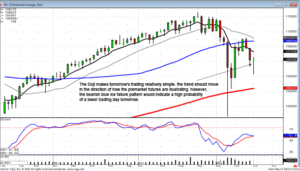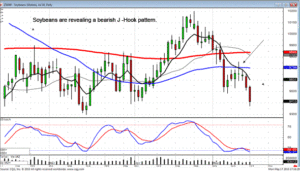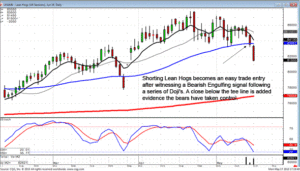Commodity futures price quotes are available for food and fiber, grain and oil seed, interest rates, cattle and hogs, metals, and oil and energy futures. No matter whether one is trading corn futures, oil futures, copper futures, gold futures, natural gas futures, or silver futures knowing the current commodity futures price is essential for profitable futures trading in commodities. One can find the current price on futures for any given commodity by looking online at the Chicago Mercantile Exchange, (CME), the Chicago Board of Trade (CBOT), the New York Mercantile Exchange (NYMEX), and the commodity exchange, COMEX. An excellent means of learning about commodity futures pricing and commodities markets is commodity and futures training.
Commodity futures contracts are agreements between two parties for the sale of a given quantity of a given commodity on a specified future date. Futures contracts can be for a few months or for years. For example, in May the COMEX trades corn futures contracts for delivery in May, July, September, and December of the same year. It also trades contracts for delivery in March, May, July, September, and December of each of the next two years. Then it trades contracts for July and December three years hence. Depending upon crop conditions, market demand, and factors such as the price of oil and the amount of corn being diverted to ethanol production the commodity futures price of corn will vary above or below the current spot price.
A commodities trading in futures should be distinguished from options trading in commodity futures. A futures contract confers the obligation to buy or sell the commodity in question if the contract is held until expiration. In fact, many traders will exit their position in the days prior to expiration. However, producers and buyers who are hedging commodities will, in fact, deliver or take delivery of the commodity in question. On the other hand buying calls and buying puts in the commodity futures market confers the option to buy or sell but not the obligation. Selling calls and selling puts, of course, confers the obligation if the buyer decides to exercise the option. The advantage of buying calls or puts is that the trader will only lose his premium if the commodity price does not move as expected.
As with all markets price movements can be predicted with technical analysis tools such as Candlestick charting and Candlestick pattern formations. Although fundamental commodity analysis will tell the trader the eventual commodity futures price he or she will need to follow the example of rice traders in ancient Japan in letting market history predict market future. Because history does, in fact, repeat itself in commodity market price patterns it is possible to predict that a market trend will continue or that market reversal will occur. The trader knowledgeable in Candlestick trading tactics will typically be one up on the rest of the market in profiting from commodity futures price movement. Letting the market tell the trader what the market will do is still an adage that works after hundreds of years of commodity trading.
Market Direction
The failure of the trend at the 50 day moving average makes the 200 day moving average the next likely target. Obviously, that should keep the orientation of your portfolio to the short side. After trading much lower during the day, the Dow and the NASDAQ attempted to close near the higher end of the trading range. This gave some possibilities of a small bounce tomorrow. The premarket futures will give a good indication of how this market is going to move tomorrow after today’s Doji’s. Keep in mind, one of the basic price patterns is the appearance of a Doji after a strong move one way or the other. The Doji indicates a day of indecision between the Bulls and the Bears. As seen in the Dow and the NASDAQ today, the Doji becomes a very good indication of whether a bounce could occur back up to the T-line or a lower open would indicate the bears have won, the downtrend will remain in progress.

DOW
Have you ever read the books that are titled “How I turned $5000 into $250,000 Trading Commodities”? What is the first reaction when looking at that title? Boy, I should be able to do that. I am reasonably intelligent. You take the book home and you read it from cover to cover hoping to learn that secret that made the author big bucks. However, when you have finished the book, you discovered the contents merely told how the author was long or short a commodity that was moving in a trend and they pyramided the position and made huge gains. The rest of the book merely talked about how the commodity market functioned. After reading the book, you sit there and say that was interesting but I did not learn how I was going to utilize my intelligence to make the big dollars like the author did.
Is it possible to make a fortune trading commodities? Yes, but not everybody is going to be lucky enough to be in a position that starts getting huge moves in one direction or the other. But big profits can be made trading commodities. If you are shooting for that big price move that you happen to be in at the right time, you will probably lose big bucks before you ever make big bucks. Fortunately, candlestick analysis allows an investor to make consistent profits while trading commodities. The bonus is that the signals and patterns put an investor’s funds in trade situations that has high probabilities of producing big price moves/big profits.
The biggest deterrent for most investors about trading commodities is they constantly hear about how risky they are. That is a completely true statement, provided you do not know how to trade commodities. Candlestick analysis creates a trading platform that makes trading commodities a non-risky venture. Candlestick signals are the graphic depiction of investor sentiment. That sentiment does not change whether you or trading slow moving bonds, stocks, or highly leveraged trading entities. Making big profits trading commodities is a combination of being able to identify the correct trades, then being able to control the emotional aspects of investing. The Japanese Rice traders made fortunes trading Rice successfully. The poignancy of that statement is that Rice is not a very exciting commodity. It doesn’t have great volatility in price.
How do you hit a lucky trade while trading commodities? As in the famous words of Thomas Edison, “The harder I work, the luckier I get.” Learn how to trade commodities correctly and you can make huge profits. Learn how to trade commodities correctly, and you’ll have a much better grasp on trading stocks profitably. This weekend’s Candlestick Forum Commodity Trading training concentrates on how to identify high profit trades, then how to maintain your mental discipline to maximize the profits of each trade. Can you turn $5000 into $250,000? It is feasible but not likely. Can you turn $5000 into $20,000? That is very reasonable. Can you turn that $20,000 into $50,000? That is very reasonable. Can you turn that $50,000 into $90,000? Once again, utilizing candlestick analysis, the compounding effect of multiple correct trades can produce huge profits with normal market price movements. Take the time to explore a trading market that holds more advantages to the active investor than merely trading stocks. Candlestick analysis, which consistently provides high probability trade situations, becomes very effective when trading fast-moving/highly leveraged commodity trades. Click here for more training information.

Soybeans

Lean hogs
Chat session tonight at 8 PM ET
Good Investing,
The Candlestick Forum Team
Website special reflects current newsletter. If you are reading an archived newsletter you will be directed to Current Website Special.
Speak Your Mind